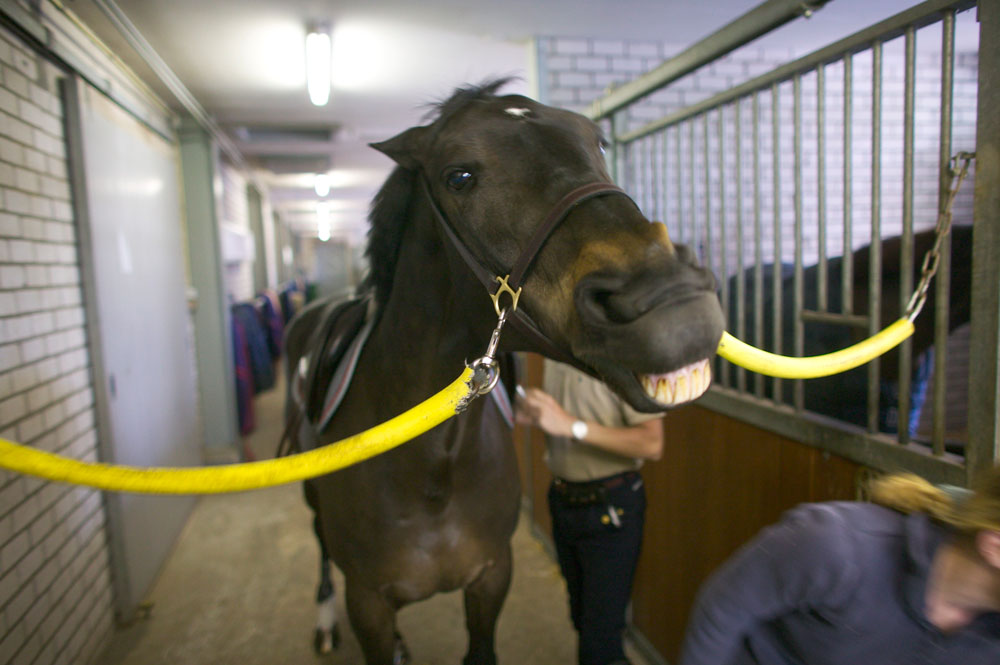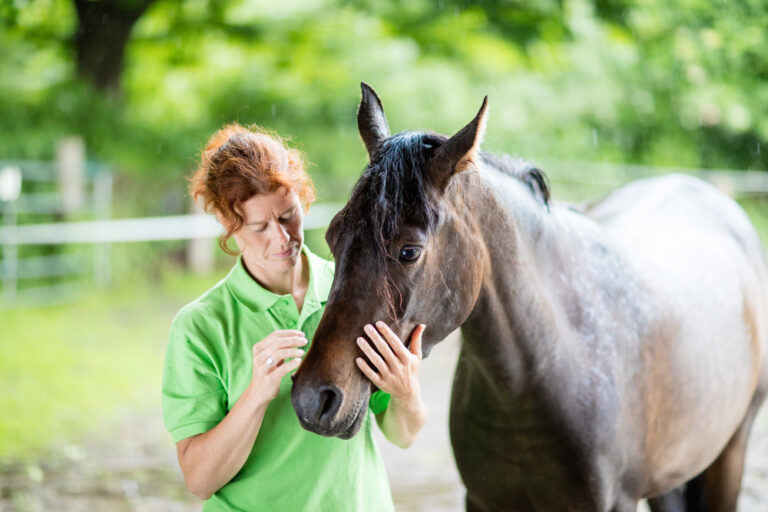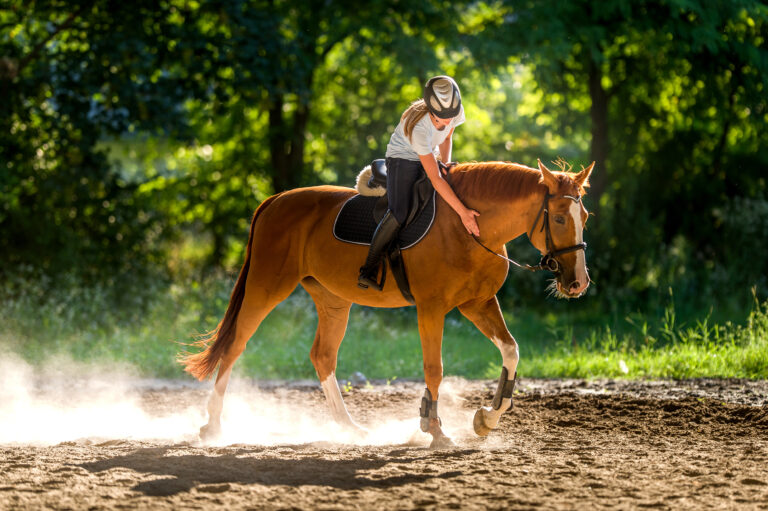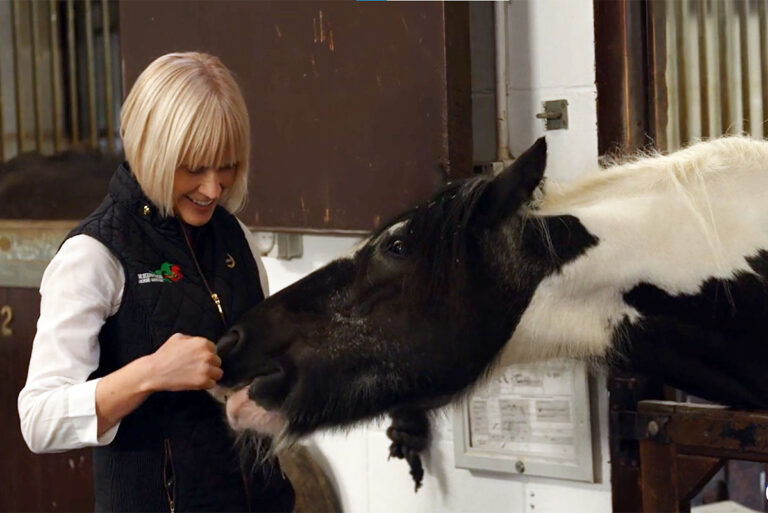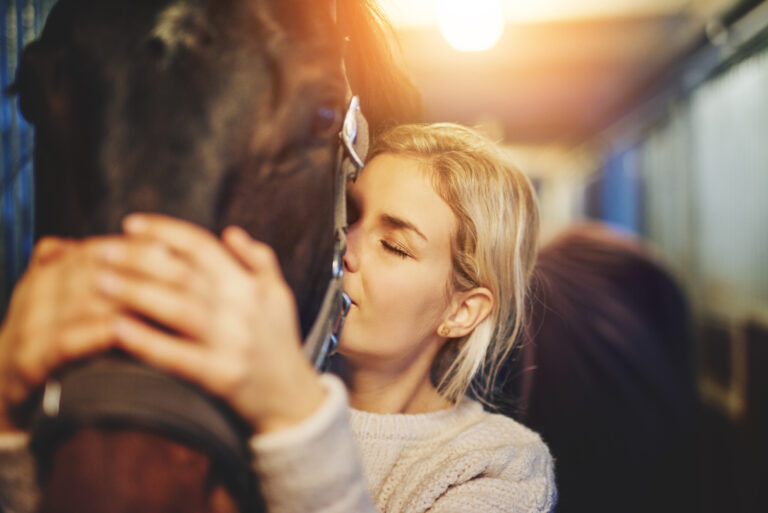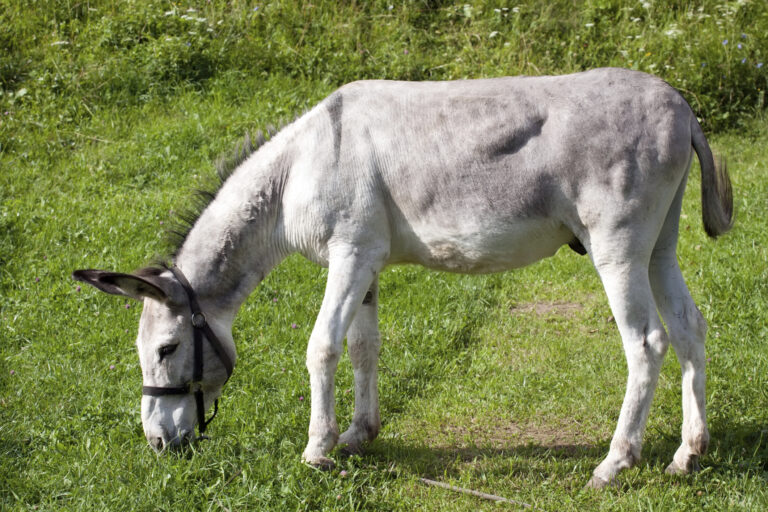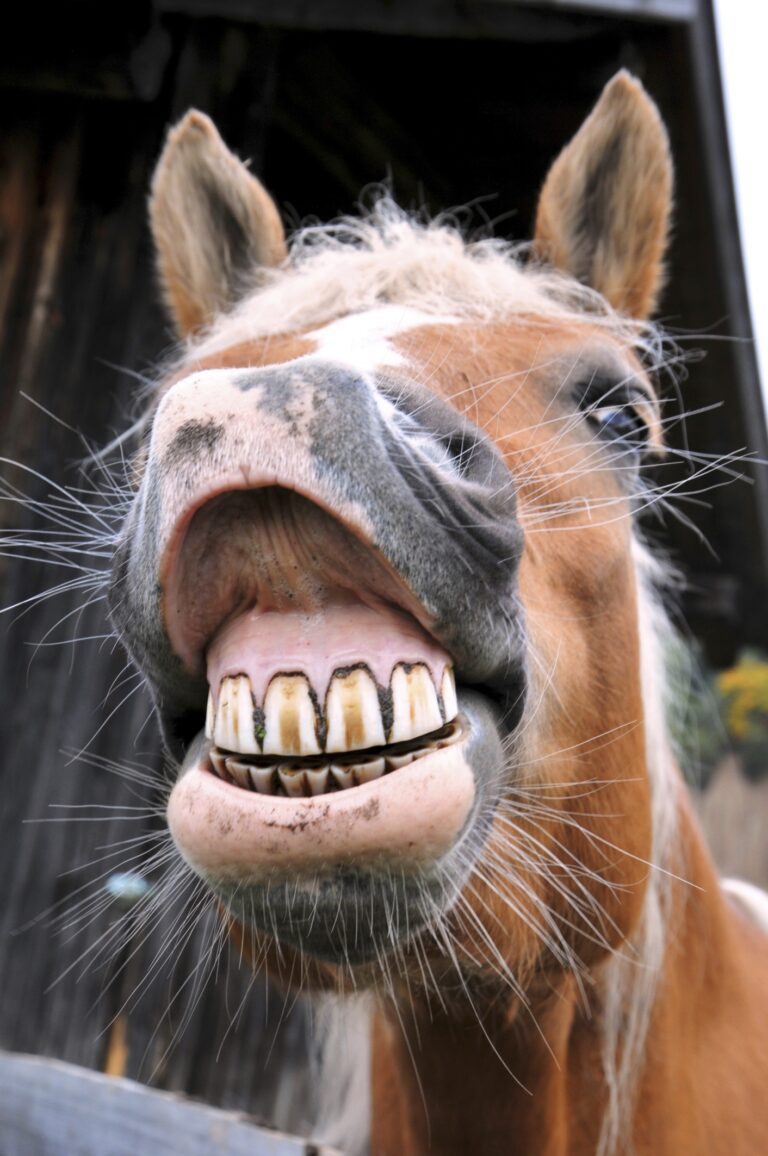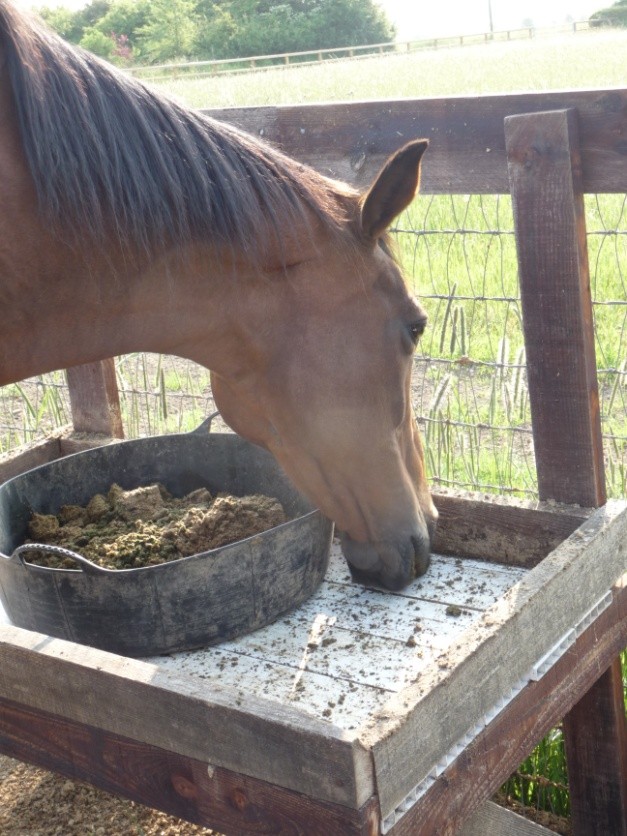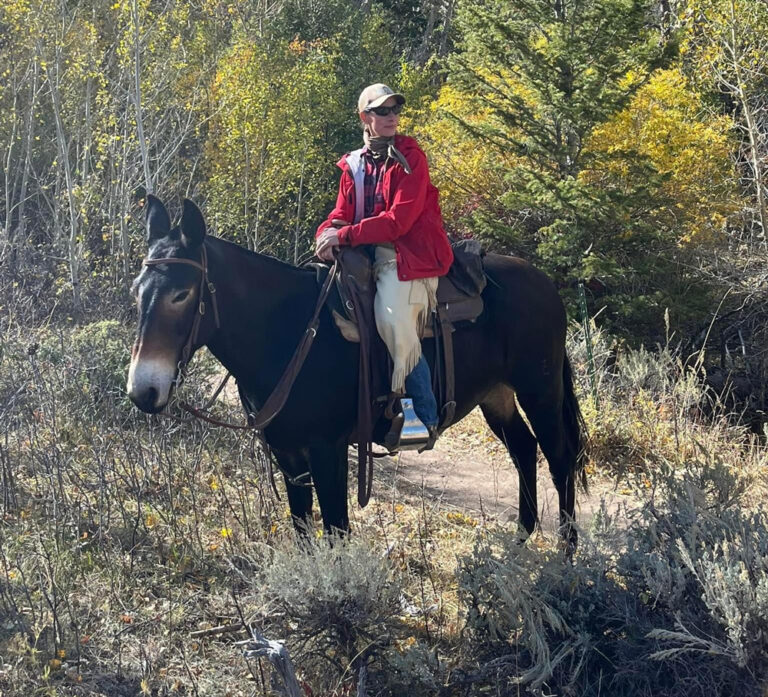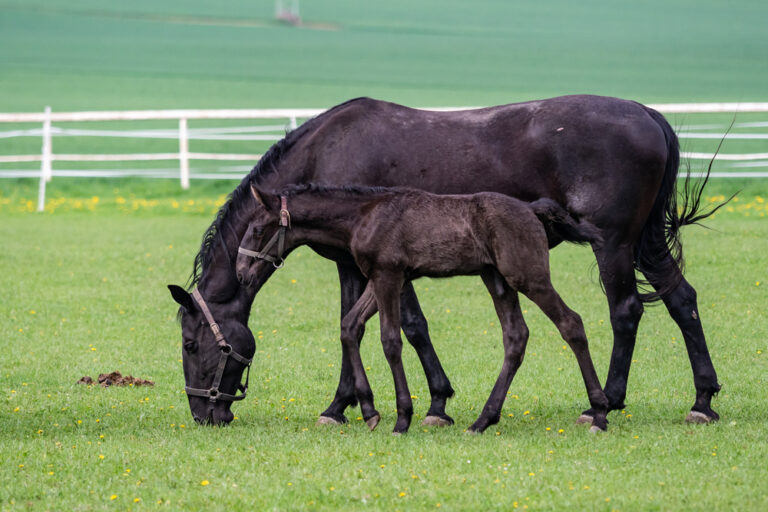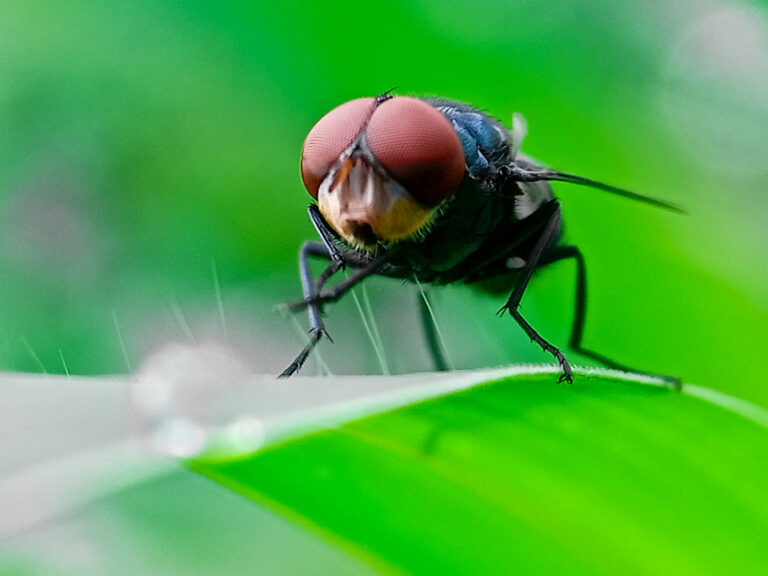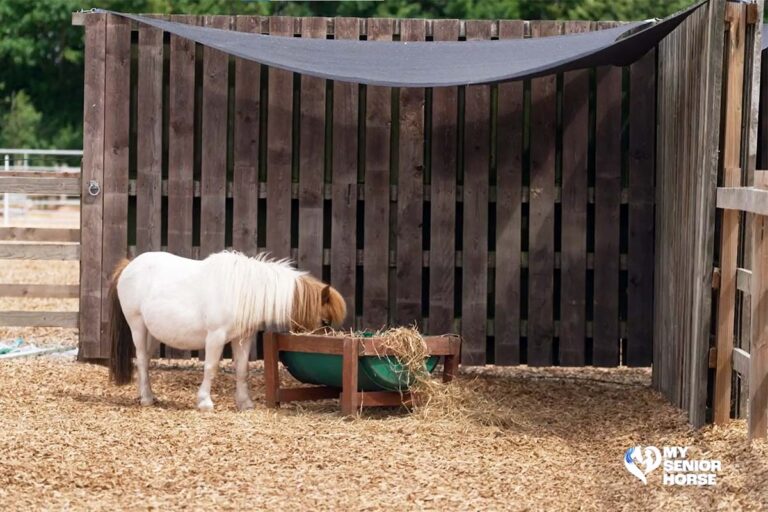Gastric ulcers are common in horses, and senior horses might be particularly at risk. In this article, we’ll give a refresher on gastric ulcers and explain what this condition means to senior horses.
The Equine Stomach
The equine stomach is divided into two different areas. The upper part is covered with squamous epithelium. This mucosa is the same type as we have in the human oesophagus. This part of the stomach does not produce acid or enzymes. Protection against gastric acid is based on external factors, such as saliva, fiber intake, and intervals between forage intakes.
The lower part of the stomach is covered with glandular mucosa, the same as in the human stomach. This is where gastric acid is produced. The protection against gastric acid is based on mucus protection, production of bicarbonate in the mucus layer, and sufficient blood circulation in order to repair minor lesions before they become more severe.
Gastric ulcers in horses have been intensively investigated over the last 20 years. That is when we became able to visualize the equine stomach clearly and relatively easily using long gastroscopes.
Gastric Ulcers in Horses
We know that many horses have ulcers. In some studies, the prevalence ranges from 25%-90%, depending on horses’ discipline, workload, management, and geography. We have now gained a much better understanding of this condition, even though there are still many unanswered questions.
We understand that EGUS (equine gastric ulcer syndrome) is an umbrella term, describing ulcer-related damage mainly in the equine stomach.
But, looking at the stomach in more detail, it is now clear that we are dealing with at least two different conditions: ESGD (equine squamous gastric disease), which describes lesions in the squamous region, and EGGD (equine glandular gastric disease), which describes damage to the glandular mucosa.
These two conditions are caused by very different mechanisms, have different risk factors, and require different treatment approaches. It is therefore important to find out which type of ulcers are present in an individual horse, where they are located, and how severe they are. These factors will influence management and treatment.
Clinical Signs of Gastric Ulcers in Horses
Clinical signs of ulcers include abdominal discomfort, reduced appetite, weight and body condition loss, diarrhoea, or increased risk of colic.
Some of the earliest studies looking at gastric ulcers were based on Thoroughbred racehorses. These horses often show reduced appetite when under negative influence. But newer studies have shown that appetite is not always a predictive sign for gastric ulceration.
Most pony breeds, cobs, and coldblooded horses will maintain their feed intake when they have ulcers. Their clinical signs might be more subtle, such as changes in behaviour, adverse reactions when saddled or girthed, and irritability when being groomed.
Ulcer Diagnosis
The only way to diagnose gastric ulcers is to scope the horse. The horse has to be fasted for several hours before the examination. Most horses tolerate both the fasting and the examination well.
Gastroscopy is always recommended when there is a suspicion of gastric ulcers. A proper diagnosis (ESGD or EGGD) will give the horse the best chance of being treated correctly, depending on what pathology is present.
Gastric Ulcer Treatment
Treatment of gastric ulcers in horses is based on proton pump inhibitors (omeprazole) in various formulations. This is sometimes supported by other medicines. The aim of the treatment is to block or significantly reduce the production of gastric acid. This creates an environment within the stomach where healing is possible.
Risk Factors for ESGD
ESGD describes damage to the upper and squamous part of the stomach. There are well-known risk factors for this disease. In general, the problem is often caused by incorrect or sub-optimal management and nutrition.
Most studies looking at risk factors for ESGD agree that these are the primary causes, and that they all are interlinked:
- Restricted chewing causing reduced production of saliva. Horses only produce saliva when they chew. Saliva contains a large amount of bicarbonate, which helps neutralize the acidic environment in the stomach (and is especially key as the horse constantly secretes gastric acid into its stomach).
- Lack of fiber (forage) in the stomach. Chewed fiber creates a fiber mat, or a physical barrier. This is important in order to prevent direct contact between the acidic gastric juice and the squamous mucosa. Lack of fiber can be caused by restricted access to forage or grass or by prolonged intervals between forage feedings. The horse’s stomach gradually empties within 2-4 hours. If the gaps between forage meals are too long—especially during active daylight hours—the stomach will be left without any fibrous protection and no saliva entering the stomach.
- Intake of too much hydrolysable carbohydrate (sugar and starch). This is in relation to the complementary feed (i.e., grain meals). This type of feed causes excessive gastric fermentation and production of larger amounts of volatile fatty acids (VFA). VFAs can damage the surface of the squamous mucosa, especially when the pH in the stomach is low (which tends to occur with low forage intakes and reduced chewing). When the integrity of the gastric mucosa is damaged, the gastric acid will penetrate the surface and increase the corrosive damage of the tissue
ESGD in Senior Horses
Senior horses might be at an increased risk of developing ESGD. This is especially true when their dental health is affected.
Pain in the mouth, restricted chewing, restricted production of saliva, and reduced fiber intake are all predisposing factors for gastric ulcers in the squamous part of the stomach. If the horse is fed with complementary feeds based on grain, with higher levels of starch and sugar, the risk increases even more.
Risk Factors for EGDD
EGGD describes damage in the lower or glandular part of the stomach. It is not caused by corrosive damage from gastric acid. It is currently believed to be more of an inflammatory reaction. This causes hyperaemia and hyperplasia of the glandular mucosa and/or damage of the surface with either bleeding or severe inflammation of the tissue.
Reduced local protection mechanisms will increase the risk of glandular ulcers. But, so far our knowledge regarding risk factors for EGGD is restricted.
As far as we know, nutrition is not a risk factor for EGGD. Several studies have not been able to show any correlation between fiber intake, starch intake, feeding intervals and an increased risk of glandular ulcers. However, we still recommend addressing nutrition management.
Stress (social, environmental, or due to frequent transportation), pain, and other diseases can also increase the risk of ulcers.
We also know that intense and frequent exercise increases the risk of glandular ulcers. But, precisely how this will cause ulcers in the glandular part is not fully understood.
EGGD in Senior Horses
Senior horses are at increased risk of developing EGGD when they suffer from chronic pain caused by arthritis, dental problems such as diastema or EOTRH, laminitis, or other painful conditions.
Senior horses might also become stressed when living in a group with other horses. The social hierarchy is based on the individual’s ability to maintain the position in the herd. Pain, lameness, weight loss, or conditions such as PPID will affect the senior horse in a group of horses. Having an ulcer will increase the negative influence on the wellbeing of the individual even more.
Reducing the Risk of Gastric Ulcers in the Senior Horse
The following tips can help reduce your senior horse’s risk of developing gastric ulcers.
- Regular health checks on the senior horse are always important. Discovering dental problems or arthritis can have a huge influence since reduced chewing can cause ESGD and chronic pain increases the risk of EGGD
- Horses in general should be fed as much forage/roughage as possible. Some horses and ponies might not require any other food (other than vitamin and mineral supplementation). Older horses, however, might have reduced ability to chew very rough fibers and forage. These horses might have to be managed differently (see Tips on Feeding Older Horses with Dental Issues).
- Horses in little or no work or that are extremely ‘good doers’ might benefit from being fed lower energy-containing forages and/or restricted amounts (not less than 1.5% BW without advice). You can implement strategies to maximise the time taken to ingest (e.g., use double haylage nets/appropriately chopped chaff). Avoid straw as the only forage source (except for donkeys).
- Senior horses prone to weight loss might benefit from being fed low non-structural carbohydrate forage. Soaking forage reduces the amount of NSC. Try providing soaked fibers in addition to the regular forage.
- Use complementary feeds with moderate or low amounts of starch and sugar to help prevent ESGD. Ideally feed less than 1g/kg bodyweight starch per meal and less than 2g/kg bodyweight starch per day.
- If additional energy is required, consider gradually introducing supplemental vegetable oil (up to 100mls/100kg bodyweight), but check the vitamin/mineral balance of the resultant diet.
- Provide water continuously, even when out at pasture.
- Senior horses living in a herd might benefit from staying in a separate space (stall/paddock) for part of the day or at night. This can provide them with shelter and security and give them enough time to consume their feed. Some might require a buddy to be nearby.
Further Reading
- Havemeyer Report on Equine Gastric Ulcer Syndrome (EGUS). Kimberly S. Brown. MySeniorHorse.com
- Equine Appetite Loss. MySeniorHorse.com
- Senior Horse Loss of Appetite. Nicolas C. Galinelli, DVM, PhD Candidate, MySeniorHorse.com
- Horse Digestive System Diagram. MySenorHorse.com
- Dr. Nanna Luthersson author bio. MySeniorHorse.com
- Effect of changing diet on gastric ulceration in exercising horses and ponies following cessation of omeprazole treatment. Luthersson et al. May 2019. Journal of Equine Veterinary Science 83
- Risk factors associated with equine gastric ulceration syndrome (EGUS) in 201 horses in Denmark. Luthersson et al. September 2009. Equine Veterinary Journal
- The prevalence and anatomical distribution of equine gastric ulceration syndrome (EGUS) in 201 horses in Denmark. Luthersson et al. September 2009. Equine Veterinary Journal
- Behaviour and stress responses in horses with gastric ulceration. Malmkvist, Poulsen, Luthersson et al. December 2012. Applied Animal Behaviour Science
- European College of Equine Internal Medicine Consensus Statement—Equine Gastric Ulcer Syndrome in Adult Horses. Sykes, Hewetson, Luthersson et al. September 2015. Journal of Veterinary Internal Medicine
- Effect of moving from being out on pasture into training on incidence of EGUS on Icelandic horses. Lutherson et al. September 2022, JAVMA
- Risk factors for EGUS for adult Icelandic riding horses. Luthersson et al. November 2023, Animals
Sign up for My Senior Horse’s FREE newsletter to get the latest information about equids 15 years and older delivered straight to your inbox!
-
View all posts
Nanna Luthersson, DVM, is a senior equine practitioner in Hestedoktoren, Denmark. Her main interests are GI and endocrine problems, laminitis, and nutrition.

